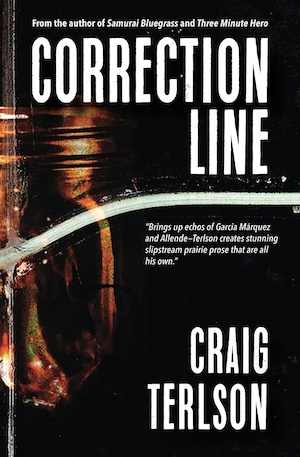If gritty police procedurals are your crime fiction fix, then maybe it’s time to add Marrisse Whittaker to that ever-growing list of authors to explore. Set in the North East of England, The Devil’s Line is her follow up to The Magpie, which was shortlisted for The Lindisfarne Prize for Outstanding Debut Crime Fiction in 2020. It’s also another outing for protagonist DSI Billie Wilde.
The story starts off with a bang – literally – as a young teenage member of a local county lines gang ends up under the wheels of an oncoming train, pushed there by person or persons unknown. Sophie Grey was a promising student, from a loving family – whatever possessed her to get involved with such a dangerous crowd?
As if the mangled corpse of a young girl isn’t enough to contend with, Wilde also has the matter of a decapitated crime boss on her plate. And that pun is intended, because Christy Callaghan’s head is found in the midst of a buffet platter of peeled prawns. It’s enough to put you off seafood for life. His body? Well that’s kinda gone astray…
It’s my first meeting with Billie Wilde, and it soon becomes clear that she’s a driven woman, to the detriment of her personal life. She’s also battling to come to terms with what happened in book one – and if, like me, you’re stepping into the series with The Devil’s Line then you might feel at something of a disadvantage. What went before is hinted at but not fully explained, so it may be best to read The Magpie first to get the full series experience.
Vague feelings of being late to the party notwithstanding, this is an author who can conjure up a living and breathing character in a mere few sentences, and her settings are spot on too — from Billie’s home overlooking the coast at Alnmouth to the north east’s mean streets.
Marrisse Whittaker’s plotting isn’t too dusty either. Although there is a vague feeling of chucking everything in bar the kitchen sink at times, she handles the assorted strands like a pro, drip feeding tasty breadcrumbs to keep the reader engaged and in the moment.
Alongside the county lines drug trafficking storyline, and the case of the headless gang boss, there’s someone stalking Wilde – leaving her past-their-sell-by-date roses accompanied by cryptic, increasingly threatening, messages. Foolishly, Wilde dismisses them out of hand – she hasn’t got time to deal with such fripperies – and that’s something she could come to regret later on. But some of the people Wilde knows and loves are suddenly acting strangely, her boss (who is also her godfather) is on her back, she has a rocky relationship with her second in command and she’s carrying a torch for a guy who doesn’t seem to care… See what I mean about an overload of plot threads?
There’s a strong police procedural angle, and it’s clear that the author has done her homework, particularly on the subject of the insidious creep of county lines gangs in unsuspecting small communities. It is deftly and comprehensively explored, without burying the reader in redundant detail – a neat balancing act and one that is to be applauded. And setting aside from the severed head on a platter, some of the things you may uncover about shrimps might make you think twice before ordering a prawn cocktail.
If you’re already a fan of Marrisse Whittaker’s work, then The Devil’s Line is a must read; coming to it cold is a definite disadvantage. Probably time to grab a copy of The Magpie methinks, and start filling in the blanks.
Also see Carol Wyer’s Robyn Carter series. You’ll find plenty of north east settings in our crime fiction gazetteer of the region.
Bloodhound Books
Print/Kindle/iBook
£1.89
CFL Rating: 3 Stars








